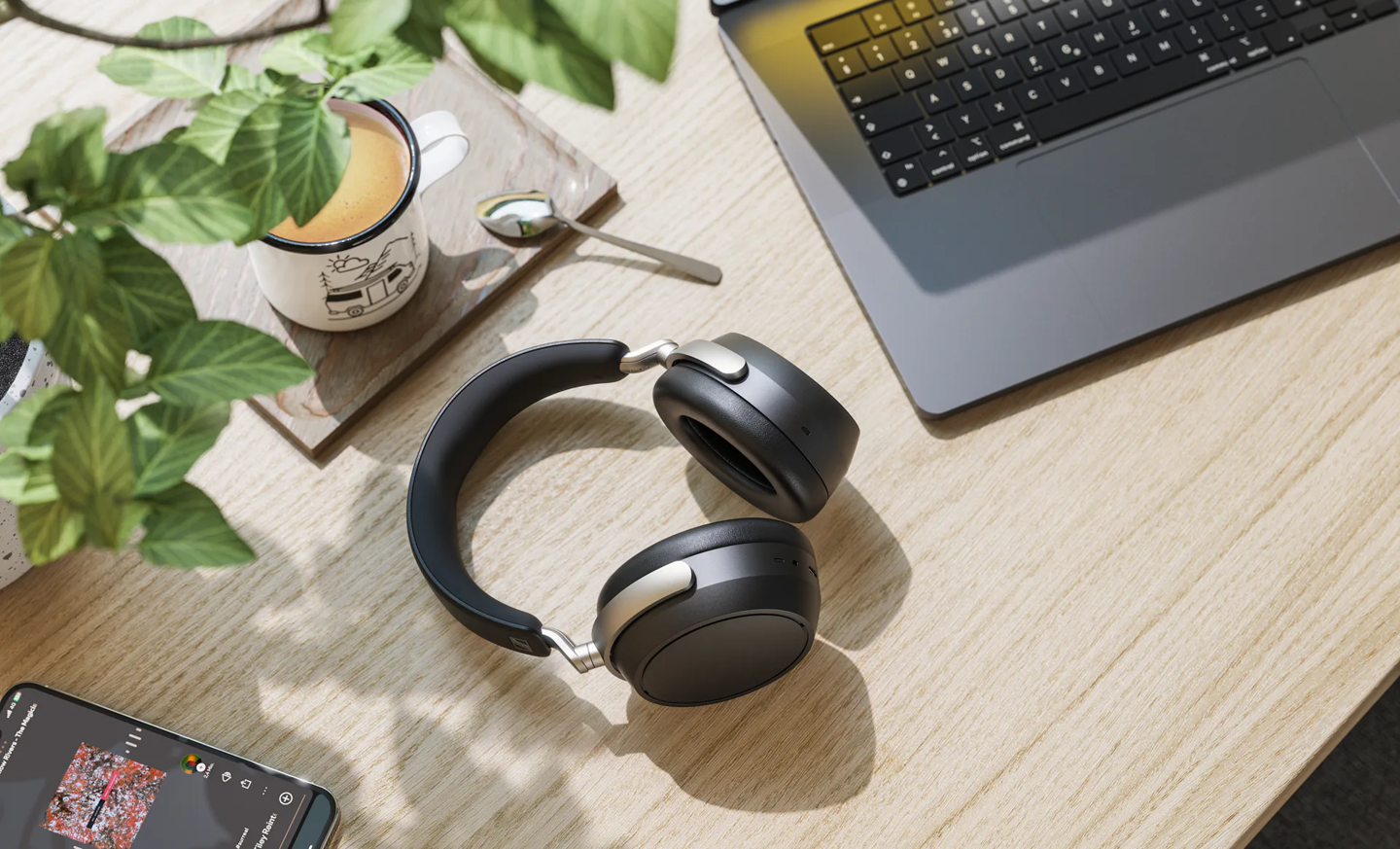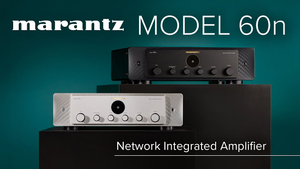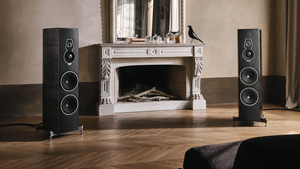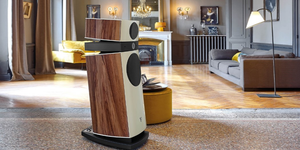
Sennheiser HDB 630 Review: The Unwired Audiophile Ideal?
I. Introduction: Bridging the Great Divide
For decades, the world of high-fidelity audio has been governed by a fundamental schism: the divide between the uncompromising purity of the wired connection and the untethered freedom of the wireless world. On one side stands the audiophile ideal—a pristine, unaltered signal path from source to transducer, a philosophy that has long dictated that the finest listening experiences are necessarily bound by a physical cable. On the other, the relentless march of technological progress, offering the profound convenience of Bluetooth, the sanctuary of active noise cancellation (ANC), and the liberty to experience music anywhere, albeit often with the implicit acceptance of sonic compromise. Into this contested space steps Sennheiser, a brand uniquely positioned at the confluence of these two worlds. As the architect of legendary audiophile staples like the HD 600 series, its bona fides in the realm of critical listening are unimpeachable. Simultaneously, its success with the popular Momentum and Accentum lines has cemented its status as a formidable force in the modern wireless consumer market.

The new Sennheiser HDB 630 is the company’s most audacious attempt yet to reconcile this dichotomy. It arrives with a grand and explicit ambition: to fuse the "unmatched audiophile precision" of its revered HD 6-series lineage with the "portable convenience" and feature set of its most successful wireless models. This is a headphone engineered not for one side of the divide or the other, but for the "high-performance audio enthusiast who wants it all," a product that promises to deliver "Audiophile Sound, Cut Loose".

Yet, the HDB 630's story carries a deeper resonance, one rooted in the brand's own history. The choice of the "630" designation is a deliberate and telling echo of a past endeavor: the wired HD 630VB. That headphone, a closed-back model featuring a physical "Variable Bass" dial, was Sennheiser's prior attempt at a portable audiophile solution. It was met with a deeply divided reception, often criticized for a "gimmicky" implementation and measurements that some in the community found wanting. The new HDB 630, therefore, is more than just a new product; it is a strategic and technological redemption. The crude, analog bass dial of its predecessor has been supplanted by a sophisticated, professional-grade Parametric Equalizer within a powerful digital engine. The HDB 630 represents the maturation of an idea, replacing a blunt instrument with a surgical tool and adding the crucial element of wireless freedom, signified by the "B" for Bluetooth. This review will critically examine whether this modern reimagining succeeds where its ancestor stumbled, and whether Sennheiser has finally crafted a headphone that does not merely navigate the compromise between fidelity and freedom, but transcends it entirely.

II. Design and Ergonomics: A Legacy Refined
The experience of the Sennheiser HDB 630 begins with a presentation that is purposeful and comprehensive. The headphones arrive in a durable, soft-shell zippered travel case that contains not only the headphones themselves but a full suite of accessories designed for versatile connectivity. Included are a USB-C charging cable, a 3.5mm analog audio cable for traditional wired use, an airline adapter, and, most significantly, Sennheiser's BTD 700 USB-C transmitter—a small but pivotal component that underpins the headphone's high-resolution audio promise.

Build and Materials
Upon first handling, the HDB 630 feels both familiar and refined. Sennheiser has made the strategic decision to house its new acoustic system within a chassis "inherited from the best-selling MOMENTUM 4". This is a logical and effective choice, leveraging a proven platform known for its robust construction and user-friendly ergonomics. The design is understated and functional, with smooth, clean lines and earcups that are finished in a material designed to be less prone to collecting fingerprints, addressing a common grievance with many modern headphones.
The primary touchpoints exude a sense of considered quality. The earpads and headband are cushioned with "Japanese Protein Leatherette" sourced from IDEATEX, a material selected specifically for its reputation for a gentle touch, long-term durability, and breathability—all critical factors for ensuring comfort during extended listening sessions. While the overall aesthetic may not possess the bespoke, artisanal luxury of some higher-priced competitors, the construction feels solid and dependable, built for the rigors of daily use. Weighing in at 10.97 ounces (approximately 311 grams), it strikes a reasonable balance between substantiality and wearability.
This design approach can be seen as a "Momentum-Plus" philosophy. Rather than reinventing the physical form, Sennheiser has built upon a successful foundation. This efficient engineering strategy allows for the concentration of research and development resources on the elements that are of paramount importance to the target audiophile audience: the transducer, the internal acoustic treatments, and the advanced digital signal processing (DSP) engine. The result is a product that feels reliable and ergonomically sound from the moment it is worn, while promising an entirely elevated sonic experience within. The critical question, which the remainder of this review will address, is whether the substantive internal upgrades are sufficient to distinguish the HDB 630 not merely as a "Momentum 4 Pro," but as a true audiophile-grade instrument in its own right.

Comfort and Fit
Leveraging the acclaimed ergonomics of the Momentum 4 chassis provides the HDB 630 with a significant head start in long-term comfort. The clamping force is moderate and well-distributed, avoiding the excessive pressure that can lead to fatigue. The plushness of the IDEATEX earpads is immediately apparent, creating a secure seal around the ear without feeling oppressive. The headband offers ample padding, and the combination of these elements makes the HDB 630 a headphone well-suited for the multi-hour listening sessions that define a "daily driver".
The earcups offer sufficient depth for most ear shapes, preventing the uncomfortable contact with the inner driver housing that can plague shallower designs. The overall balance on the head is excellent, feeling secure without being restrictive. While the passive noise isolation afforded by the closed-back design and earpads is effective for general environments, some preliminary reports suggest it may not achieve the same profound level of ambient noise attenuation as more aggressively isolating designs like the Bowers & Wilkins Px8 S2. This is a minor consideration, however, as the primary mechanism for noise reduction is the active system, and the physical design prioritizes a comfortable, breathable fit over maximum passive occlusion.

III. The Sonic Architecture: A Deep Dive into the HDB 630's Voice
The ultimate measure of any headphone claiming an audiophile pedigree lies in its sound. Here, the HDB 630 seeks to establish a new benchmark for what is possible in a wireless, closed-back design. The internal acoustic system is entirely new, featuring a 42mm dynamic transducer produced at Sennheiser’s advanced facility in Tullamore, Ireland, and subjected to a tuning philosophy described as being for "purity, not hype".
Overall Tonality and Character
Sennheiser's stated goal for the HDB 630 is to deliver an "effortlessly agile listen with smooth mids, intimate vocals, and speedy dynamics" that remains "true to the vibe that left the mastering studio". This points to a commitment to neutrality and balance, a deliberate move away from the heavily colored, V-shaped sound signatures that dominate much of the consumer wireless market. The tuning has been specifically engineered to produce a "smoother response in the upper midrange and lower treble areas," a region critical for natural vocal and instrumental timbre and one that is often mishandled, leading to harshness or artificiality.
The resulting presentation is one of sophisticated composure. The HDB 630 does not seek to impress with bombastic, exaggerated frequencies. Instead, it captivates with its coherence and authenticity. The sound is clean, controlled, and remarkably transparent, allowing the listener to connect directly with the texture and emotion of the recording. This is a headphone that rewards active, critical listening, revealing layers of detail and nuance in familiar tracks without ever sounding clinical or sterile. Early impressions from journalists have been positive, with one noting, "I've been impressed by them so far," and it is easy to understand why. The HDB 630's voice is mature, refined, and deeply musical.

Frequency Spectrum Analysis
A detailed examination of the frequency spectrum confirms the success of Sennheiser's tuning philosophy.
Bass
The low-end performance is a masterclass in control and articulation, perfectly embodying the stated goal of "extended yet controlled bass". The sub-bass reaches deep, providing a solid foundation and a satisfying sense of weight and scale when the music calls for it. On tracks driven by synthesized basslines or deep electronic drums, the HDB 630 delivers impact without ever succumbing to bloat or bleed into the midrange. The mid-bass is taut, fast, and textured. The pluck of a bass guitar string, the resonant body of a cello, and the skin of a kick drum are rendered with exceptional clarity and definition. This is a bass response that serves the music with precision, capable of delivering visceral power for electronic and hip-hop genres while retaining the deftness and nuance required for complex acoustic and orchestral works.
Midrange
The midrange is, without question, the heart of the HDB 630's sonic excellence. In a market where vocals and core instruments are often recessed or colored, Sennheiser's focus on "smooth mids" and "intimate vocals" pays enormous dividends. Vocals, both male and female, are presented with a stunning sense of presence and naturalness. There is no hint of the nasality or "veiled" character that can afflict lesser designs. Instead, voices are rich, detailed, and emotionally immediate, placed clearly and correctly within the mix. Instruments like piano, acoustic guitar, and brass possess their authentic timbre and body. The smooth transition from the upper-midrange into the lower-treble is particularly noteworthy, allowing electric guitars to crunch and soar without becoming strident, and snare drums to snap with authority without sounding harsh. This faithful and articulate midrange is what elevates the HDB 630 from a merely pleasant headphone to a genuinely high-fidelity transducer.
Treble
The treble is extended, airy, and exquisitely refined. Sennheiser has successfully navigated the treacherous path of providing detail and sparkle without introducing sibilance or fatigue. The claimed frequency response extending to 40kHz is reflected in a treble that feels open and unrestricted. Cymbals shimmer and decay realistically, with a metallic texture that is distinct and clear. The subtle nuances of string instruments, the breathiness of a flute, and the delicate transients of high-hats are all resolved with ease. The smoothness in the lower treble ensures that the presentation remains comfortable and non-fatiguing even over long listening periods, yet there is no sense of a rolled-off or blunted top end. It is a treble that is both informative and eminently listenable.

Technical Performance
Beyond its excellent tonal balance, the HDB 630 demonstrates impressive technical capabilities, particularly for a closed-back, noise-cancelling design.
Soundstage and Imaging
While no closed-back headphone can truly replicate the expansive, out-of-head experience of an open-back design, the HDB 630 creates a surprisingly spacious and well-defined soundstage. The presentation extends comfortably beyond the confines of the earcups, offering a good sense of width. More impressive is the imaging precision within that space. The placement of individual instruments and vocalists in the stereo field is sharp and stable, allowing for easy deconstruction of complex arrangements. There is a commendable sense of layering and depth, preventing the sound from feeling flat or congested.

Dynamics and Transients
The "speedy dynamics" promised in the marketing materials are readily apparent in the listening experience. The HDB 630 handles macroscopic dynamic shifts—the transition from a quiet verse to a powerful chorus, for example—with effortless authority and impact. Micro-dynamic details, the subtle variations in volume that convey musical expression, are also rendered with great skill. The attack of notes is fast and clean, and the decay feels natural and unforced. This dynamic agility contributes significantly to the headphone's engaging and lifelike character.
Detail Retrieval
The combination of the high-quality transducer and the clean, balanced tuning results in excellent detail retrieval. The HDB 630 is a revealing headphone, capable of unearthing subtle elements in a recording—the faint sound of room reverberation, the texture of a bow on a string, the quietest background harmonies—that are often lost on less capable systems. It achieves this clarity not through artificial treble boosting, but through sheer transparency across the entire frequency spectrum.
IV. The Digital Engine: Technology, Features, and Control
The superb acoustic performance of the HDB 630 is enabled and enhanced by a sophisticated digital engine that addresses the core challenges of wireless audio with intelligence and a clear focus on the user experience.

The High-Resolution Promise: The BTD 700 Dongle and aptX Adaptive
Sennheiser has confronted the fragmented and often confusing landscape of wireless audio codecs with a brilliantly pragmatic solution. Acknowledging that only an estimated 16% of smartphones natively support high-resolution wireless audio transmission, the company has chosen not to simply rely on the variable capabilities of the source device. Instead, every HDB 630 includes the BTD 700, a compact USB-C dongle that acts as a dedicated Bluetooth transmitter.
This small device is the key to unlocking a consistent, high-quality experience for the vast majority of users. By plugging it into a phone, tablet, or laptop, it bypasses the device's internal Bluetooth hardware and establishes a direct link to the headphones using the aptX Adaptive codec, capable of streaming at up to 24-bit/96kHz resolution. This instantly upgrades an estimated 80% of smartphone models to high-resolution wireless capability, providing a guaranteed level of quality out of the box, a particularly significant advantage for iPhone users limited to the lower-bitrate AAC codec.
This approach represents a deliberate and insightful philosophical stance on high-resolution audio. While some competitors engage in a "codec war," championing the highest theoretical bitrates of LDAC or the promise of aptX Lossless, Sennheiser has prioritized practical, reliable performance. aptX Adaptive is renowned not only for its sound quality but also for its robustness and low latency. The "adaptive" nature of the codec means it can dynamically scale its bitrate in response to the wireless environment, reducing the resolution slightly in congested areas to ensure a stable, dropout-free connection. In practice, this system works seamlessly, providing a rock-solid link that delivers pristine audio for music and perfectly synchronized sound for video and gaming. It is a user-centric solution that favors an excellent real-world experience over a superior specification on paper.

Active Noise Cancellation: Silence in Service of Sound
The HDB 630 is equipped with a Hybrid Adaptive ANC system designed to "tame ambient noise" and allow for focused listening in any environment. The performance of this system is best characterized by its subtlety and its deference to the music. While it may not achieve the absolute, vacuum-like silence of the class-leading systems from competitors like Sony, its implementation is exceptionally musical.
The ANC effectively neutralizes the low-frequency drone of airplane cabins, train carriages, and HVAC systems, creating a serene canvas upon which the music can be painted. Crucially, it accomplishes this without introducing a noticeable hiss or a sense of uncomfortable ear pressure. Most importantly, the fundamental sound signature of the headphones remains remarkably consistent whether the ANC is engaged or disabled. The system is designed to "block out distractions while preserving clarity and dynamics," and it succeeds admirably in this goal. This is noise cancellation that understands its role is to serve the audio, not to be the star of the show. For the listener who prioritizes audio fidelity above all else, this transparent and non-intrusive approach is arguably more desirable than a more powerful system that comes with sonic compromises.

The Smart Control Plus App: A Command Center for the Connoisseur
Sennheiser's companion app, Smart Control Plus, transforms from a simple utility into a powerful command center, offering two features in particular that elevate the HDB 630 into a class of its own for user customization.
Parametric Equalizer
The inclusion of a full Parametric EQ is a groundbreaking feature for a consumer wireless headphone and a clear nod to the HDB 630's audiophile ambitions. Unlike a conventional graphic equalizer with fixed frequency bands, a parametric EQ provides surgical control over the sound. Users can select a specific frequency to adjust, control the amount of boost or cut (gain), and, critically, define the width of the frequency band being affected (the 'Q' factor). This is a professional-grade tool that allows for everything from minor, precise corrections to wholesale re-voicing of the headphone's character. The interface also includes the ability to A/B test changes, and a future firmware update is planned to allow users to share their custom presets via QR codes, fostering a community of sonic exploration. This powerful tool gives the user the ultimate authority over their listening experience.
Crossfeed
Inspired by the technology in Sennheiser's flagship HE 1 electrostatic system, the Crossfeed feature offers a subtle but effective solution to a long-standing issue with headphone listening. Many older stereo recordings feature "hard-panned" mixes, where certain instruments are placed exclusively in the left or right channel. On headphones, this can create an unnatural and fatiguing listening experience. The Crossfeed function gently blends a small amount of the signal from each channel into the other, simulating the way sound waves interact in a room when listening to speakers. The effect is a more cohesive and natural stereo image, pulling the soundstage slightly from the sides of the head to a more realistic position in front of the listener. It is an elegant and well-implemented feature that enhances the listenability of a significant portion of the modern musical canon.
Battery Life and Other Features
Rounding out the HDB 630's impressive feature set is its class-leading battery endurance. It is rated for up to 60 hours of playback on a single charge with both Bluetooth and ANC enabled. This figure is double that of its primary competitors and represents a massive real-world advantage, effectively eliminating battery anxiety for all but the most extended journeys. A quick-charge function provides approximately 7 hours of listening time from just 10 minutes of charging. The headphone also features a high-quality communication system, with two microphones per side enhanced by beamforming technology for crystal-clear phone calls. Finally, support for multipoint Bluetooth allows for simultaneous connection to two devices, such as a laptop and a smartphone, for seamless switching between work and entertainment.
V. The Competitive Landscape: A Summit of Titans
The Sennheiser HDB 630 enters a fiercely competitive market segment, priced at $499.95, where it goes head-to-head with established titans from Sony and Bowers & Wilkins. To understand its unique position, a direct comparison is essential.

Comparative Feature Analysis
The following table provides an at-a-glance summary of the key specifications and features of the top three contenders in this premium category.

Sennheiser HDB 630 vs. Sony WH-1000XM6
This matchup represents a classic battle of philosophies. The Sony WH-1000XM6 is a technological tour de force, defined by its industry-leading active noise cancellation. Powered by its advanced QN3 processor, the XM6 offers a level of silence that is currently unmatched, making it the default choice for frequent flyers and those who demand maximum isolation. Sonically, the XM6 offers a powerful, engaging, and consumer-friendly sound, characterized by a robust bass response that, while well-controlled, is more pronounced than the HDB 630's. Some listeners find its soundstage to be somewhat narrow and its midrange slightly veiled out of the box, though its capable 10-band equalizer allows for significant user adjustment.
The HDB 630 counters not by trying to beat Sony at its own game, but by offering a different value proposition. It concedes the title of absolute ANC king to the XM6, instead providing a system that is highly effective yet musically transparent. Its core strength lies in its sound quality, which, out of the box, is more balanced, neutral, and aligned with traditional audiophile preferences. The HDB 630's Parametric EQ offers a far greater degree of sonic control than Sony's graphic EQ. Furthermore, the Sennheiser holds two decisive practical advantages: its 60-hour battery life, which doubles that of the Sony, and the included BTD 700 dongle, which guarantees a high-resolution connection for all users, a feature Sony lacks. The choice is clear: for the user whose absolute top priority is noise cancellation, the Sony remains the champion. For the user who prioritizes sound fidelity, customization, and battery endurance, the HDB 630 presents a more compelling case.
Sennheiser HDB 630 vs. Bowers & Wilkins Px7 S3
This comparison is a duel between two brands with deep roots in high-fidelity audio. The Bowers & Wilkins Px7 S3 is lauded for its luxurious design, premium materials, and excellent technical sound quality. Its sound is often described as highly detailed and resolving, with a clean, impactful bass and a wide soundstage for a closed-back model. Some critics, however, note that its midrange can feel slightly recessed, which may not appeal to listeners who favor vocal-centric music.
The HDB 630 competes on highly favorable terms. While the Px7 S3's bespoke design may have a slight edge in aesthetic luxury, the HDB 630's Momentum-based chassis offers proven, workhorse ergonomics. Sonically, the two present a fascinating contrast. The Px7 S3 may appeal to those who enjoy a more energetic, detailed presentation, while the HDB 630's strength lies in its rich, natural, and forward midrange—the very area where the B&W is sometimes criticized. Both headphones support the aptX Adaptive codec, but the HDB 630's included dongle again gives it a universal advantage in delivering that quality. The Sennheiser's Parametric EQ is a more powerful tool than the standard five-band EQ offered by B&W. And once again, the HDB 630's commanding 60-hour battery life is a significant, undeniable advantage over the Px7 S3's 30 hours. For the listener torn between these two, the decision may come down to a preference for B&W's design and energetic sound versus Sennheiser's vocal-centric tuning, superior battery life, and more advanced sound customization tools.
VI. Final Verdict
The Sennheiser HDB 630 set out to achieve a monumental goal: to deliver a genuine audiophile experience, free from the wire. After a thorough evaluation of its design, technology, and, most critically, its sonic performance, it is clear that Sennheiser has not only succeeded but has also carved out a unique and compelling identity in a market of formidable competitors. By focusing on a philosophy of pragmatic excellence—prioritizing a guaranteed high-quality experience, providing professional-grade tools for user control, and delivering marathon-level endurance—the HDB 630 establishes itself as a new benchmark for the modern music lover.
It synthesizes the key findings into a product that is more than the sum of its parts. Its sound is balanced, detailed, and deeply musical. Its feature set is intelligent and genuinely useful. Its comfort and battery life make it an ideal companion for daily life and long-haul travel. It is a headphone that respects both the art of the recording and the intelligence of the listener.

Pros
Superb, Audiophile-Tuned Sound: Delivers a beautifully balanced, natural, and coherent sound signature with exceptional midrange clarity and intimate vocal presentation.
Class-Leading Battery Life: An extraordinary 60-hour battery life with ANC active sets a new standard for endurance in the premium wireless category.
Universal High-Resolution Audio: The included BTD 700 USB-C dongle is a game-changing feature, providing a stable, out-of-the-box aptX Adaptive experience for nearly any source device.
Powerful Sound Customization: The professional-grade Parametric Equalizer and subtle Crossfeed function offer an unparalleled level of sonic control and refinement.
Proven Comfort and Ergonomics: The use of the acclaimed Momentum 4 chassis ensures excellent long-term comfort for extended listening sessions.
Cons
ANC Performance: While highly competent and musically transparent, the active noise cancellation does not achieve the absolute level of silence offered by the class leader, Sony.
Utilitarian Design: The aesthetic, while clean and functional, may lack the bespoke, luxurious feel and premium materials of direct competitors from Bowers & Wilkins.
Codec Support: The absence of LDAC and aptX Lossless codecs may be a point of contention for specification purists, though this is largely mitigated by the excellent performance of the included dongle.
Premium Price Point: The HDB 630 is positioned at the upper end of the mainstream premium market, representing a significant investment.

The Ideal User
The Sennheiser HDB 630 is not for everyone. It is not for the consumer who seeks the absolute strongest noise cancellation above all other considerations. Nor is it for the individual who prioritizes fashion-forward design over function. Instead, this headphone is meticulously crafted for the discerning listener—the modern audiophile. It is for the individual who refuses to compromise on sound quality but demands the convenience of a wireless form factor. It is for the enthusiast who values granular control over their audio, the long-distance traveler who needs a headphone that will outlast any journey, and the music lover who seeks a deep, authentic connection with their favorite artists.
In conclusion, Sennheiser has successfully bridged the great divide. The HDB 630 is a resounding triumph, a masterful execution of a challenging concept. It proves that with intelligent engineering, a user-centric philosophy, and an unwavering commitment to audio fidelity, it is possible to create a product that offers the soul of a wired audiophile headphone with the freedom and intelligence of a modern wireless flagship. It may not be the only vision of the unwired audiophile ideal, but it is a compelling, thoughtfully engineered, and brilliantly realized one.






Comments